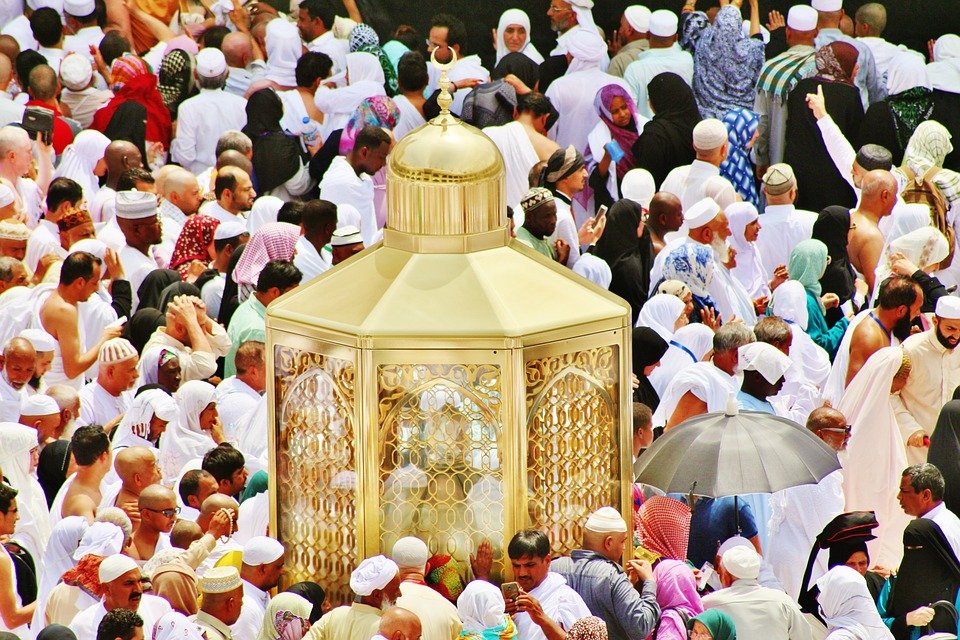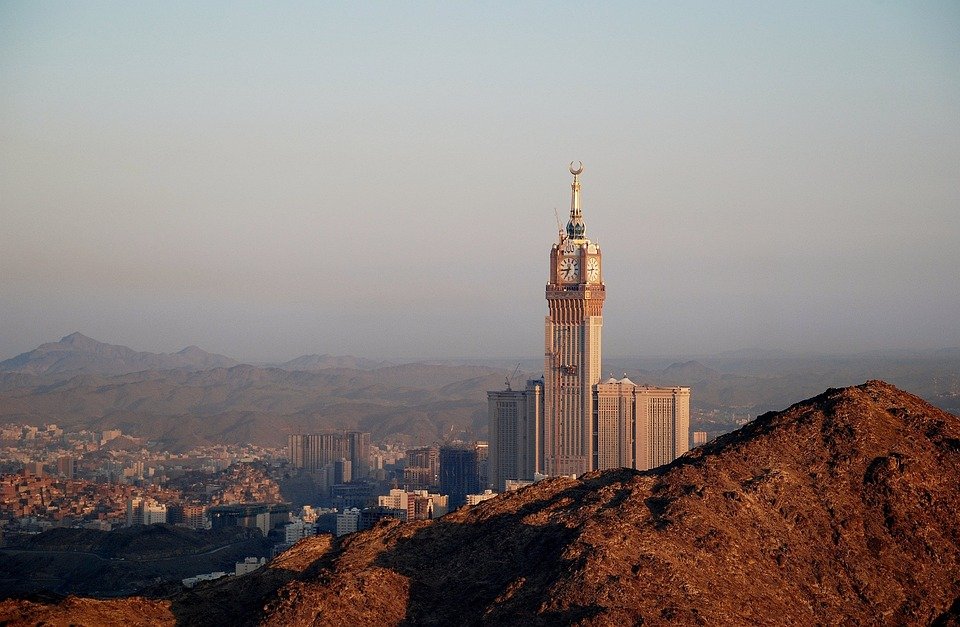You are here to read: Where Do Muslims Go During Hajj and Why: A Complete Guide – A Thoughtfully Written Guide Offering Spiritual Wisdom and Travel Advice for Every Pilgrim who is going on holy journey of Hajj or Umrah.
When exploring the question “Where do Muslims go during Hajj and why,” you’ll find that this pilgrimage takes faithful believers to several sacred locations in Saudi Arabia. The main destination is the holy city of Mecca, where the Kaaba, a cube-shaped structure, stands at the center of the Grand Mosque. During Hajj, millions of Muslims gather to perform rituals that symbolize unity, submission, and devotion to Allah. In this article, I promise to provide you with a comprehensive guide on where Muslims go during Hajj and why these locations hold such profound significance in Islamic tradition.
Understanding the importance of where Muslims go during Hajj and why is critical for anyone looking to appreciate its rich spiritual heritage. Hajj is not just a series of rituals; it is a transformative experience that draws believers together in faith and humility. Our expertise at Airlink Hajj and Umrah, backed by nine years of experience in the Makkah and Madinah travel field since 2016, assures you that you will receive accurate and valuable information. In my opinion, knowing the significance behind each site Muslims visit during Hajj enhances the entire experience, making it more meaningful and fulfilling.
Where Do Muslims Go During Hajj and Why: A Complete Guide
Muslims from all corners of the globe eagerly anticipate Hajj, a significant religious pilgrimage that carries deep spiritual meaning. Each year, millions pack their bags, ready to walk a path paved with devotion and unity. Hajj takes place in the holy city of Makkah, Saudi Arabia. Here, pilgrims engage in rituals that draw them closer to their faith.
As you read, picture the atmosphere: a rich tapestry woven with prayers, hope, and togetherness. So why is this pilgrimage so vital? What happens during these transformative days? Together, we’ll explore the sacred places and the reasons behind this spiritual odyssey.
Why Makkah?
Makkah is the beating heart of Islam. It’s the birthplace of the Prophet Muhammad, and this city holds the iconic Kaaba, a cube-shaped structure located within the Masjid al-Haram. The Kaaba represents unity, as Muslims face it in prayer every day, no matter where they are in the world.
When we approach Makkah during Hajj, we step onto Holy Ground. Pilgrims gather in unison, bound by faith and tradition. This experience is not just about physical travel; it’s about spiritual elevation. The intensity of emotions in Makkah is palpable, and many find themselves overwhelmed with joy and gratitude. That sacred city serves as a reminder of Islamic teachings and the importance of community.
The Kaaba: A Symbol of Faith
The Kaaba is central to all Hajj rituals. Pilgrims frequently circle around it in a movement called Tawaf. This act emphasizes the oneness of God and the importance of community in worship. While walking around the Kaaba, many feel deeply connected, shedding their worldly concerns and focusing solely on faith.
You're at the middle of this awesome post at AirlinkHajjandUmrah.com through: Where Do Muslims Go During Hajj and Why: A Complete Guide. Keep reading, it gets better!
For the believers, each step symbolizes a yearning to be closer to their Creator. The Kaaba, adorned in black silk and gold, stands as a silent witness to each prayer, each hope, and each tear shed. It’s not just a building; it’s a culmination of prayers echoed by millions throughout history, creating an aura that enchants each pilgrim who approaches it.
The Rituals of Hajj
Hajj unfolds through specific rituals that span several days. From the moment pilgrims arrive in Makkah, they prepare their hearts and minds. Each step is filled with significance. After arriving, the first major act is to perform Tawaf around the Kaaba. This is followed by various rites, such as the standing at Arafat, where pilgrims pray fervently, seeking forgiveness and guidance.
These rituals provide a spiritual detox, allowing believers to cleanse their souls and renew their commitment to faith. As they participate in each act, they reflect on their lives, their choices, and their connections to others. The beauty of Hajj lies not just in its rituals but in the transformation that occurs within each participant. It’s a time for reflection, growth, and profound connection to God.
Mina: The Tent City
After the activities in Makkah, pilgrims head to Mina, a tent city located a short distance from Makkah. The tents serve as temporary shelters for millions, but more importantly, they embody the spirit of brotherhood and equality. In Mina, every pilgrim wears the same simple garments, fostering a sense of unity amid diverse backgrounds.
Staying in Mina is not just about comfort; it’s a moment to engage with other pilgrims. Sharing meals, stories, and prayers creates bonds that last beyond the pilgrimage. Here, the sense of community deepens, reminding everyone that we are all part of a larger family under one faith. It’s a unique experience that emphasizes humility and solidarity.
Arafat: The Day of Forgiveness
Perhaps the most pivotal day of Hajj is the Day of Arafat. On this day, pilgrims gather at the plain of Arafat for prayer and reflection. Many believe this day offers the highest chance of receiving divine mercy. The gathering here is awe-inspiring, with countless pilgrims standing shoulder to shoulder, all united in hope and prayer.
The fervor and emotion in this space are memorable. During the afternoon, the beautiful sermon of the Prophet Muhammad is recited, reminding everyone of key teachings and the colossal impact of this pilgrimage. As the sun sets, pilgrims leave Arafat with hearts full of gratitude and renewed determination to embrace their faith.
Muzdalifah: A Night of Reflection
After Arafat, the pilgrimage continues to Muzdalifah, another critical location in the Hajj rituals. Here, pilgrims collect pebbles for the next day’s ritual of stoning the devil. But this gathering serves a deeper purpose: it’s a night filled with quiet reflection. Under the starry sky, believers ponder their journeys, their hopes, and their commitment to spiritual growth.
Sleeping under the open sky symbolizes humility and a connection to creation. Many find solace here, listening to the whispers of their hearts. This experience in Muzdalifah is about stripping away distractions, allowing each person to connect intimately with their faith and aspirations.
The Significance of Sacrifice
The culmination of Hajj includes the ritual of sacrificing an animal, known as Qurbani. This act commemorates the willingness of Abraham to sacrifice his son as an act of obedience to God. By participating in this ritual, pilgrims express gratitude for the blessings in their lives and acknowledge the importance of selflessness.
The act of sacrifice also reinforces values such as compassion and community. Once the sacrifice is made, the meat is distributed to those in need, embodying the spirit of sharing and gratitude. It’s a moment where faith manifests in tangible ways, transforming both the giver and the receiver.
Conclusion: A Transformative Experience
Hajj is more than a physical journey; it’s a profound spiritual experience that reshapes lives. The rituals, from Tawaf around the Kaaba to the day at Arafat, cultivate a deep sense of faith, connection, and humility. Each moment spent in these holy cities solidifies the bonds among pilgrims and revives their commitment to live by the tenets of Islam.
As individuals return home, they carry with them not only memories but also a renewed sense of purpose. Hajj teaches us about unity, compassion, and the power of belief. It reminds us that, despite our differences, we are all part of a vibrant community drawn together by faith. Wouldn’t you agree that such experiences are what make life truly significant?
That wraps up Where Do Muslims Go During Hajj and Why: A Complete Guide. Thanks for sticking with us till here! Share this: Where Do Muslims Go During Hajj and Why: A Complete Guide with your friends.
Check our homepage at Air Link Hajj & Umrah for more awesome updates.
Some interesting posts are: 1: Umrah Mubarak, 2: When is Umrah closed 2026?, 3: When does Umrah start after Hajj 2026?
Mushu, an experienced Saudi Arabia traveler and writer, shares insightful tips and spiritual reflections to enhance Hajj and Umrah journeys for fellow pilgrims. He has been to Makkah and Madina from 2016 to 2023 many times and his posts will reflect this.







